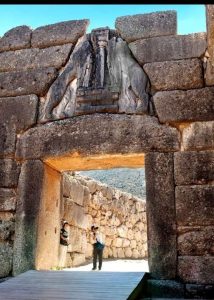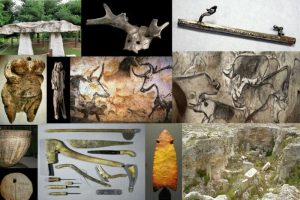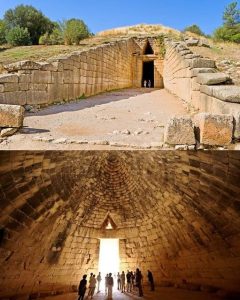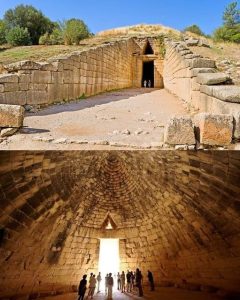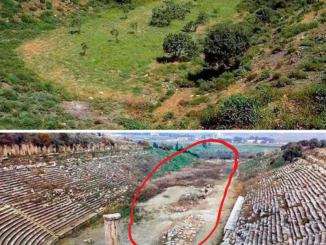The Lion’s Gate, standing majestically at the entrance to the ancient citadel of Mycenae in Greece, is a monumental testament to the grandeur of Mycenaean civilization. Dating back to 1250 BC, this iconic structure is not only an architectural marvel but also a symbol of the power and mystery that shrouded one of Greece’s earliest advanced civilizations.
Historical Context
Mycenae was one of the major centers of Greek civilization, a leader in culture and military prowess from 1600 BC to about 1100 BC. It was the city of legendary King Agamemnon, who played a pivotal role in the Trojan War as depicted in Homer’s epics. The Lion’s Gate served as the main entrance to this fortified citadel, which included royal palaces and grave sites filled with golden treasures.
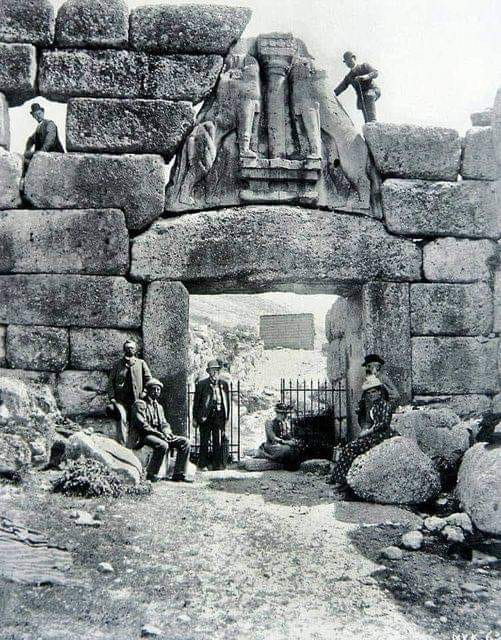
Architectural Significance
The Lion’s Gate is famed for its construction, a prime example of the “Cyclopean” masonry used by the Mycenaeans. The term “Cyclopean” comes from the mythical Cyclops, suggesting that the walls were built by these giant creatures because the stones used were so enormous that they seemed too large to be moved by humans. The gate itself is topped with a relieving triangle that hosts a pair of majestic lionesses or lions, standing on either side of a column. The animals are believed to symbolize power and authority, guarding the city.
The Gate’s Reliefs
The relief above the lintel of the Lion’s Gate is one of the most recognized symbols of Mycenaean culture. The carving depicts two lionesses (or lions, as the heads are missing and assumed) placed symmetrically, facing a Minoan-style column that represents a deity or shrine. This artistic feature underscores the religious and ceremonial significance of the gate, possibly serving as a ward against enemies or evil spirits.
Preservation and Archaeological Insights
Today, the Lion’s Gate stands as a significant archaeological site, attracting scholars and tourists alike. It offers insights into the Mycenaean way of life, their architectural ingenuity, and their artistic sensibilities. Ongoing preservation efforts aim to maintain the integrity of this ancient structure amidst the challenges posed by natural erosion and the increasing footfall of visitors.
The Lion’s Gate in Mycenae is more than just an ancient relic; it is a doorway into the world of the Mycenaeans, offering a glimpse into a civilization that shaped the course of Greek history. Its impressive state of preservation and the stories etched into its stones continue to captivate those who walk through its arches, stepping back into a time when lions guarded the great city of Mycenae.

